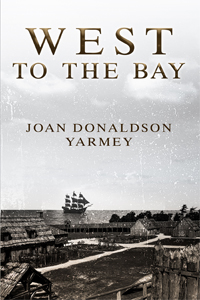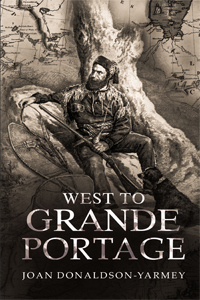

https://books2read.com/West-to-Grande-Portage-V2
https://bwlpublishing.ca/donaldson-yarmey-joan/
I am a proud Canadian author of over twenty fiction and non-fiction books in my long writing career. But I am just one of thousands of published writers from this huge country. Canada has had a long and illustrious history of producing world renown authors and books going all the way back to the 18th century.
Frances Moore was born in England in 1724. She was a well-known poet and playwright in England before she and her husband, Reverend John Brooke moved to Quebec City in 1763, for John to take up the post of army chaplain. During her time there Frances wrote The History of Emily Montague, a love story set in the newly formed Quebec province. The story is told through the voices of her characters by way of personal letters between the two. This is known as the epistolary (of letters) type of writing and it was popular during the1700s in Europe. The Brookes’ returned to England in 1768 and the novel was published in 1769 by the London bookseller, James Dodsley. The History of Emily Montague was the first novel written in what is now Canada and the first with a Canadian setting. Frances died in 1789.
The following gives a brief history of two authors from the province of Nova Scotia
Joyce Barkhouse (nee Killam) was born in Woodville, Nova Scotia on May 3, 1913. She earned her Teachers License in 1932 and began teaching in Sand Hill, now known as East Aylesford. At the age of nineteen she had her first short story published in Northern Messenger, a Baptist Church paper for children. She moved to Liverpool, Nova Scotia, to teach and met her future husband, Milton Joseph Barkhouse. They married in 1942 and had two children. They lived in Halifax, Charlottetown, and Montreal and after his death in 1968, Joyce moved back to Nova Scotia.
Mrs. Barkhouse wrote many young adult adventure and secular stories for other church papers, anthologies and had articles published in teacher’s publications, school text books, and the Family Herald and the Weekly Star. She also wrote a self-syndicated column for weekly newspapers across Nova Scotia titled For Mothers and Others.
Although Joyce had begun writing in 1932, her first historical book, George Dawson: The Little Giant wasn’t published until 1974. Joyce’s niece is Margaret Atwood and the two of them co-wrote Anna’s Pet, a children’s book that was published in 1980. Her most notable novel was Pit Pony, a story about the friendship that developed between an eleven year old boy who was forced to work in a coal mine and a Sable Island who was a pit pony in the mine. The novel was published in 1989 and won the first Ann Connor Brimer award in 1991 for “outstanding contribution to children’s literature in Atlantic Canada” and was chosen by the librarians of Nova Scotia to be produced as a talking book for the Canadian National Institute for the Blind (CNIB). Pit Pony was also made into a television film in 1997 and a television series in 1999.
Joyce Barkhouse wrote eight books and was awarded the Order of Nova Scotia in 2007 and a year later she was made a Member of the Order of Canada for her contributions to children’s literature. She died at the age of ninety-eight on February 2, 2012.
Evelyn May Fox was born on May 16, 1902 on Emerald Isle (Stoddard Island) and raised on Cape Sable Island. Both islands are off Shag Harbour, which is at the southwestern tip of Nova Scotia. She went to high school in Halifax and then earned a Bachelor of Arts degree at Dalhousie University. She taught school until her marriage to Morrill Richardson in 1926. They moved to Massachusetts and then in 1929 they bought the 600 acre Bon Portage Island, a three kilometre boat ride from Shag Harbour. There, Morrill took over the duties of light keeper.
Evelyn Richardson helped with the lighthouse duties, raised their three children, and began her writing career. During their thirty-five years of lighthouse keeping, she wrote many articles and several books about her experiences on the island.
She won the Governor General’s Award for her memoir, We Keep a Light, in 1945, and the Ryerson Fiction Award for Desired Haven in 1953. The Evelyn Richardson Memorial Literary Award is an annual award given to a Nova Scotian writer of non-fiction.
When the lighthouse became mechanized in 1964, Evelyn and Morrill left the island and retired to Doane’s Point near Barrington, Nova Scotia. She died on October 14, 1976 at the age of 74.




.jpg)

.jpg)
.jpg)
.jpg)


.heic)

















